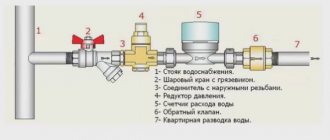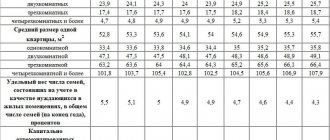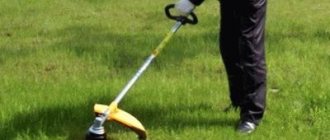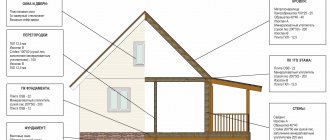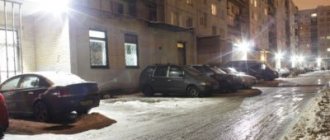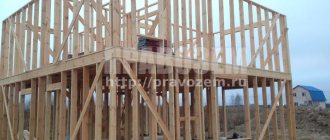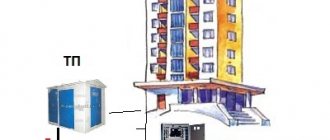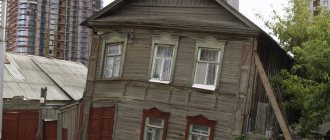How a management company works with the rules and regulations for the technical operation of housing stock No. 170 in 2020
Noise reduction and soundproofing of premises 4.10.5. Thermal insulation of enclosing structures
- Maintenance and repair of engineering equipment 5.1. Heat supply 5.2. Central heating 5.3. Hot water supply 5.4. Decentralized heat supply 5.5. Internal gas supply devices 5.6. In-house electrical, radio and television equipment 5.7. Ventilation 5.8. Internal water supply and sewerage 5.9. Garbage chutes 5.10. Elevators
- Features of maintenance and repair of residential buildings in various territories 6.1. Basic provisions 6.2. Areas of subsidence soils 6.3. Areas of saline soils 6.4. Areas of mined territories 6.5. Seismic areas (6 points and above) 6.6. Permafrost areas
Appendix No. 1: (recommended) Frequency of planned and partial inspections of elements and premises of buildings Appendix No. 2: Time limits for troubleshooting when performing unscheduled (unforeseen) routine repairs of individual parts of residential buildings and their equipment Appendix No. 3: (recommended) Logbook for recording inspection results residential building Appendix No. 4: (recommended) List of works on the maintenance of residential buildings Appendix No. 5: Journal of registration of requests from the population for the prompt elimination of faults and damage to engineering equipment in a residential building (sample) Appendix No. 6: (recommended) Integrated standards for the duration of routine repairs of residential buildings houses Appendix No. 7: (recommended) List of works related to routine repairs Appendix No. 8: (recommended) Approximate list of works performed during major repairs of housing Appendix No. 9: (recommended) Certificate of readiness of the house for operation in winter conditions Appendix No. 10 : (recommended) Furnace malfunctions, causes and methods for eliminating them Appendix No. 11: (recommended) Schedule for quality control of water temperature in heating systems at various calculated and current outside air temperatures (with calculated differences in water temperature in the heating system 95-70 and 105- 70°C)
Review of the Resolution of the State Construction Committee of the Russian Federation dated No. 170 (no changes for 2020)
Lawyers who advise users online and by telephone are often asked the following question: “where can I find Resolution 170 of the Government of the Russian Federation with the latest amendments of 2020?” In this case, another document is most often implied - Resolution of the State Construction Committee of the Russian Federation dated September 27, 2003 No. 170. No changes were made to it in 2020. This document, the most important for the housing and communal services sector, has existed in its original version for 15 years and continues to be actively used, which is also confirmed by the judicial practice of the Supreme Court of the Russian Federation.
- requirements for the procedure for maintenance and repair of housing.
- rules for the operation, major repairs and reconstruction of housing and communal services facilities, ensuring the safety and maintenance of the housing stock, and technical inventory.
- the obligation of owners to pay for housing and utilities without violating deadlines.
- a recommended list of work on the maintenance of residential buildings performed by a housing maintenance organization and an approximate list of work on routine repairs.
- rules for preparing MKD for seasonal use.
- procedure for maintaining premises, landscaping buildings and adjacent areas (including apartments, staircases, attics and basements, technical utility rooms, etc.).
- time frames for troubleshooting during urgent repairs.
We recommend reading: NSU for Group 3 Disabled People in 2020
On approval of the Rules and Standards for the technical operation of the housing stock
3 tbsp. 162 Housing Code of the Russian Federation). If the house is managed by a homeowners association, specific measures should be reflected in the annual plan for the maintenance and repair of common property in the apartment building, which is approved by the general meeting of members of the partnership (clause 8, clause 2, article 145 of the Housing Code of the Russian Federation). Despite the existence of Rules for the maintenance of common property and the requirement to specify the list of works and services in the contract, the Rules for the operation of housing stock remain one of the most important documents regulating the activities of organizations managing apartment buildings. The above is confirmed, first of all, by extensive arbitration practice, according to which failure to comply with the document in question constitutes an offense under Art. 7.22 Code of Administrative Offenses of the Russian Federation. In addition, we consider it necessary to recall the legal position of the Presidium of the Supreme Arbitration Court, set out in Resolution No. 6464/10 of September 29, 2010. Requirements and standards for the maintenance and servicing of the housing stock are determined by the Rules and Standards for the Technical Operation of the Housing Stock, approved by Resolution of the State Committee of the Russian Federation for Construction and Complex dated September 27, 2003 N 170, which are registered with the Ministry of Justice of the Russian Federation on October 15, 2003 under N 5176, published in " Rossiyskaya Gazeta" dated October 23, 2003 N 214 and are binding on both premises owners and management organizations. The said document lists what exactly should be included in the maintenance and maintenance of a house, and also indicates the parameters and conditions that, for the safety of people and the safety of a residential building, the building structures of this house must in any case meet, regardless of the wishes of the owners of its individual premises and inclusion them the corresponding works and services into an agreement with the management company... The state, based on the balance of private and public interests, has normatively determined the level of condition of residential buildings, which must be maintained at the expense of the owners by means of management companies, and has created a body competent to monitor compliance with established requirements , - the state housing inspection... All current, urgent, mandatory seasonal work and services are considered provided for in the contract by virtue of the standards for maintaining the house as an object and must be carried out by management companies, regardless of whether the corresponding specific actions are mentioned in the contract and whether there is a need for them implementation of a special decision of the general meeting of owners of premises in the house. Let us summarize what the arbitrators said: The rules for the operation of housing stock establish a list of those measures that in any case must be implemented in relation to apartment buildings. We emphasize that the Rules for the operation of housing stock have not been repealed. They (in terms of establishing requirements for the maintenance and repair of the housing stock) do not contradict the Housing Code of the Russian Federation and the Rules for the maintenance of common property, so there is no reason to consider them no longer in force.
How many mechanics, electricians and other workers are needed for a residential building?
The previous material was devoted to cleaners: how to correctly and on what basis calculate the required number of cleaners for each home. Service standards for staircase cleaners https://dom-i-dvor.info/rules_528_331.
Now let’s answer the following questions from residents:
— How many plumbers do you need per home?
— Do you need more roofers in winter than in summer, or the same number?
- What does the number of workers at our house depend on?
Let us turn again to the current regulatory document and look at Appendix 4 to the order of the Department of Housing, Communal Services and Improvement of the City of Moscow dated December 26, 2012 No. 05-14-535/2 .
At the end of the material we will provide a partial excerpt from a large table, and first we will show an approximate calculation.
Let's take the same real residential building. Year of construction - 2002. Its total living area is 8,327 sq.m., 12 floors, 3 entrances, 6 elevators, staircase area - 2,300 sq.m.
Let's add the missing data (in this case they will be approximate). The total area of attics and basements is 1771 sq.m., roofing material is steel, roof area is 1151 sq.m., water supply, heating supply and sewerage are centralized, wall material is brick, number of apartments is 144.
Now let’s make an approximate calculation of the standard number of workers to operate the house according to this document.
Roofer: 1151/25800 = 0.04 in summer and 1151/7270 = 0.16 in winter. Carpenter: 8327 / 45000 = 0.19 Carpenter: 8327 / 54900 = 0.15 Plasterer: 8327 / 77500 = 0.11 Painter: 8327 / 51700 = 0.16 Bricklayer: 8327 / 34000 = 0.24 Plumber: 144 / 371 + 8327 / 38600 = 0.60 Electrician: 144 / 2240 + 5 / 50 + 2 / 150 = 0.18 Electric and gas welder: 1771 / 25000 = 0.07 Helper: 1771 / 38000 = 0.05
From this calculation it is clear that the standard number of workers per house is calculated in tenths. Even if we sum it up for this particular house, we get only 1.91 workers for all work in the house.
These figures clearly show that you should not be surprised if, when you call the dispatch service, a mechanic or electrician may not arrive on time - after all, according to this calculation, it turns out that one electrician must service 5.5 such houses.
Now, by referring to this table, everyone will be able to make calculations for their home.
MAINTENANCE STANDARDS (PER YEAR) FOR WORKERS WORKING IN THE MAINTENANCE AND ROUTINE REPAIR OF COMMON PROPERTY IN AN APARTMENT BUILDING
| №№ | Name of the worker’s profession, equipment, service facilities | Unit | Service life of buildings, years | |
| 10-30 years | ||||
| groups of buildings | ||||
| 1 (brick) | 2 (remaining) | |||
| 1 | 2 | 3 | 6 | 7 |
| 1. | Roofer | sq.m of roof | ||
| - on steel roofs | ||||
| during the warm season | « | 25800 | 25800 | |
| during the cold season | « | 7270 | 7270 | |
| - on roll roofing | « | 13100 | 13100 | |
| - on roofs made of piece material | « | 16800 | 16800 | |
| 2. | A carpenter | sq.m of total area | 45000 | 55800 |
| 3. | Construction carpenter | « | 54900 | 68000 |
| 4. | Plasterer | « | 77500 | 100300 |
| 5. | Construction painter | « | 51700 | 67000 |
| 6. | Mason | « | 34000 | 38300 |
| 7. | Plumber: | |||
| - water supply, sewerage, no baths and hot water supply | apartment | — | — | |
| - water supply, sewerage, if there are baths without hot water supply | « | 321 | 321 | |
| - water supply, sewerage, hot water supply | « | 371 | 371 | |
| — central heating from the house boiler room | sq.m of total area | 37700 | 37700 | |
| — central heating from a combined heat and power plant or a quarterly boiler house | « | 38600 | 38600 | |
| — a device for washing, cleaning and disinfecting the internal surface of the garbage chute | PC. | 100 | 100 | |
| 8. | Electrician for repair and maintenance of electrical equipment: | |||
| — in houses with open electrical wiring | apartment | — | — | |
| — in houses with hidden electrical wiring | « | 2240 | 2240 | |
| — power plants | PC. | 50 | 50 | |
| — illuminated house signs and street signs | PC. | 150 | 150 | |
| — a device for washing, cleaning and disinfecting the internal surface of the garbage chute | PC. | 100 | 100 | |
| 9. | Electric and gas welder | sq.m. of attics, basements | 25000 | 25000 |
| 10. | Helper worker | « | 38000 | 38000 |
Standards for cleaning entrances of apartment buildings
Responsible for maintaining cleanliness In accordance with the Government Decree, the responsibilities of all public utilities include properly maintaining the load-bearing structures of a residential building, equipment, engineering and technical systems.
Standards of cleanliness and procedures for cleaning entrances to the microdistrict
Residents can only wait for scheduled repairs and drive away the pests themselves. Where and how to write a complaint If citizens know exactly how often they should clean up their entrance according to the law, but in practice these requirements are not met, SANPIN is not observed, residents of an apartment building have the right to write a complaint. You should proceed as follows:
- first, the complaint is filed in the name of the head of the housing and communal services management company, in which the essence of the complaint is described in free form and asked to understand the situation;
- if the letter remains unanswered, then the next authority is Rospotrebnadzor;
- if ignored, you must contact the Housing Inspectorate of the city or district;
- If this doesn’t help, go straight to the Prosecutor’s Office.
In the complaint (can be made in any form) it is important to indicate that the residents of the house do not like the way the management company employee cleans their house. Describe what is included in the concept of “dislike.”
Mandatory cleaning of entrances...
In conclusion Today in the country there are strict standards for cleaning house entrances. They are described in legislative acts: “Rules and norms for the technical operation of housing stock” No. 170; Resolution of the Russian Parliament No. 290; State GOST 51617-2000. It clearly states who should clean the dirty entrance, how often and in what form this happens. Separately, you should touch upon the garbage chute in an apartment building - cleaning it is mandatory. It is held every day. How well a multi-storey building is cleaned can be appreciated by its residents. They have the right to choose their own entrance inspector for sanitary and hygienic control of stairs and other areas of the front door. But don’t put all the responsibility for the entrance onto the cleaners. If residents do not maintain order, create a mess in the garbage collection chambers, and deliberately spoil the appearance of the entrance, then you should not expect a miracle.
Cleaning of entrances by the management company: rules and consequences of non-compliance
From the twenty-third point, one can clearly identify actions related to the maintenance of premises located in an apartment building. These include:
- carrying out wet and dry cleaning in halls, vestibules, galleries, corridors, elevator cabins and landings, ramps, staircases;
- wiping dust that covers window grilles, window sills, stair railings, electric meter cabinets, mailboxes, low-current devices, door leaves, frames and handles, closers;
- cleaning window glass;
- removing dirt from protective devices. As a rule, these are metal gratings, cell covers, pits, and textile mats.
Conflict situations and methods for resolving them Today, apartment residents very often encounter poor quality cleaning in their hallways.
Sanitary standards for cleaning the entrances of residential buildings
- 1 Cleaning legislation
- 2 Cleaning schedule
- 3 Quality of cleaning
- 3.1 Drawings on the walls
Cleanliness is the key to health. Every reasonable person knows about this. Everyone is responsible for the order within the walls of their own apartment - those who want to live comfortably clean almost every day. Cleaning entrances is another matter. According to Article 36 of the Housing Code, this territory is a common area, which means that responsibility for it (including maintenance in proper order) lies with the housing and communal services management company (MC) that manages the apartment building.
Consequently, residents of apartment buildings should not and are not obliged to clean their entrance.
Decision of the Supreme Court of the Russian Federation of October 25, 2013
Part 2 of Article 36 of the said Federal Law establishes that the parameters and other characteristics of building structures and engineering support systems during the operation of a building or structure must comply with the requirements of the design documentation. The specified compliance must be maintained through maintenance and confirmed during periodic inspections and control checks and (or) monitoring of the condition of the foundation, building structures and engineering support systems, carried out in accordance with the legislation of the Russian Federation.
We recommend reading: Documents for calculating the Age Pension in 2020 in the Republic of Belarus
The applicant believes that the prohibition established by the contested order limits his right to freely use his property for entrepreneurial and other economic activities not prohibited by law, guaranteed by Article 34 of the Constitution of the Russian Federation, and prevents the transfer of residential premises to non-residential premises in accordance with the requirements of Articles 22, 23, 24 of the Housing Code of the Russian Federation. In support of his claims, he refers to the decision of the arbitration court, which, including with reference to clause 4.2.4.9 of the Rules, refused to transfer residential premises to non-residential premises due to the lack of technical feasibility of constructing a doorway in the outer wall of the house in place of the existing window opening by dismantling parts of the wall under the window sill for the purpose of organizing an entrance (an entrance device in a window opening, previously increased in height down to the floor slab).
Sanitary standards for cleaning in the entrances of residential buildings
- “rules and standards for the technical operation of housing stock” No. 170, approved by the Decree of the country’s political system dated September 27, 2003;
- Decree of the Government of Russia No. 290 of April 3, 2013;
- GOST of Russia 51617-2000 “Housing and communal services and services. General conditions."
These documents clearly state: who, where and how should clean when it comes to maintaining cleanliness in the entrances. In fact, the entrance cleaner must be guided by these very requirements when carrying out her professional duties. If residents in residential buildings are confident that the entrance cleaner cannot cope with the tasks assigned to her, flagrantly violates laws regarding the maintenance of entrances, or does not show up at her workplace at all, they have the right to complain about her to her immediate supervisor - the head of a specific housing and communal services management company. Frequency of implementation According to the general technical conditions of GOST of the Russian Federation 51617-2000 on housing and communal services, the cleaner must perform the following work:
- wet sweep the flights of stairs and landings on the first two floors every day, excluding Sundays, as well as holidays;
- the same types of activities, only on the following floors, starting from the third, if in the building:
- there is no garbage chute or elevator, the frequency of cleaning is at least twice within one week;
- if there is a garbage chute, then its frequency is the same;
- there is only one elevator or another garbage chute, it is enough to clean up the mess up to once a week;
Sanitary rules for keeping
Advice from lawyers:
1. The magistrate considered a case of violation of sanitary and veterinary rules for keeping cattle. In the decision, the judge determined the amount of the fine for the perpetrator, but did not determine measures to eliminate the decision. How to eliminate rule violations?
1.1. The court does not have the authority to take measures to eliminate the violations that you write about. This should be dealt with by the relevant competent authorities.
Did the answer help you?YesNo
Consultation on your issue
8
Calls from landlines and mobiles are free throughout Russia
2. Say there are Sanitary rules and regulations SanPiN 42-128-4690-88 “Sanitary rules for the maintenance of populated areas” from 1988. Is this SanPin relevant at this time or are there others? In particular, I am interested in the question. At what distance from a residential apartment building should a public toilet be located?
2.1. Yes, it works. This document has been applied since August 15, 2010 in the part that does not contradict SanPiN 2.1.2.2645-10 “Sanitary and epidemiological requirements for living conditions in residential buildings and premises. Sanitary and epidemiological rules and regulations" see paragraph 2.2.3 The placement of temporary waste storage sites, especially in residential areas, must be agreed upon with the district architect and district sanitary and epidemiological stations. In exceptional cases, in areas of existing development, where it is not possible to comply with the established gaps from yard toilets, places of temporary waste storage, these distances are established by commission (with the participation of the district architect, housing maintenance organization, block committee, sanitary doctor). Acts of the commissions must be approved by the executive committees of local Soviets of People's Deputies.
Did the answer help you?YesNo
2.2. This SanPin is valid. According to it 2.3.2. Yard latrines must be located at a distance of no less than 20 and no more than 100 m from residential buildings, children's institutions, schools, playgrounds for children and public recreation.
Did the answer help you?YesNo
3. When registering a garage at GSK, my brother was faced with the following situation: the court requested the opinion of the Federal State Institution “Center for Hygiene and Epidemiology” that the complex of above-ground outbuildings and cellars does not contradict the requirements of sanitary standards and the land plot complies with state sanitary standards and rules of the “SP territory maintenance” populated areas" and is suitable for housing GSK. Are their demands justified?
3.1. Good afternoon, no, such a conclusion is not required to register ownership. With respect to you, Evgeniy Pavlovich Filatov.
Did the answer help you?YesNo
4. Violation of sanitary rules for keeping a child in the camp (sleeping on an old, deformed sofa, next to a dirty toilet). The transfer of children’s delivery is not accompanied by the police.
4.1. Violation of sanitary rules for keeping a child in the camp (sleeping on an old, deformed sofa, next to a dirty toilet) The transfer for delivering children is not accompanied by the police. Initially, I recommend filing complaints with the guardianship, Rospotrebnadzor and the prosecutor’s office at the location of the camp.
Did the answer help you?YesNo
5. The administration of the Ust-Labinsky urban settlement of the Ust-Labinsky district of the Krasnodar Territory, referring to the Rules for the improvement and sanitary maintenance of the settlement adopted by the council of deputies, forces the homeowner to enter into an agreement for garbage removal with a garbage removal company. If the contract is not concluded, they threaten to issue a fine of 5,000 rubles. Although, according to Part 1 of Article 421 of the Civil Code. In the Russian Federation, coercion to conclude an agreement is not allowed. What do i do.
5.1. Coercion to conclude a contract is indeed not allowed, and the administration’s decision is contrary to the law in any case.
Did the answer help you?YesNo
6. Does the Head of the district administration have the right to approve the Rules for the sanitary maintenance and improvement of the territories of the municipality? Is there administrative liability for the heads of enterprises, institutions, and organizations in the form of an administrative fine for violation of established rules? Is the decision of the head of the district administration to collect an administrative fine legal?
6.1. Yes, not only has the right, but also the obligation to do all this. Good luck and all the best to you! Thank you for visiting our website and seeking legal help!
Did the answer help you?YesNo
7. What claim should be filed against a neighbor in the dacha in connection with violation of sanitary and veterinary rules as a result of the construction of an outbuilding for keeping birds with a violation 10 times the size of the border of the adjacent plot. The fetid, unbearable odor caused by keeping birds and placing a poultry house in violation of the building plan in dacha and horticultural societies. Is there a standard for the number of birds on a plot of 0.06 hectares?
7.1. Write a complaint to the SES, let them conduct an inspection. After this, a lawsuit was filed in court under Article 304 of the Civil Code.
Did the answer help you?YesNo
8. Do SanPiN 983-72 “Sanitary rules for the design and maintenance of public restrooms” apply to street toilets outside populated areas.
8.1. Hello. Yes, you need to adhere to substantive law.
Did the answer help you?YesNo
9. Do I have the right to place a bunker for collecting KGM 50 cm from the playground? Will I violate the sanitary rules for maintaining territories - SanPiN 42-128-4690-88. What is the way out of this situation.
9.1. Hello! Alas, it won't work.
Did the answer help you?YesNo
10. A legal entity is located in a residential building. I stopped by for 5 minutes, parking the car under the windows of a legal entity. A protocol was drawn up against me for violating the rules for landscaping, cleaning and sanitary maintenance of the territory in the Kirovograd urban district of the Sverdlovsk region... I parked the car at a distance of less than 3 meters... is this legal in this case?
10.1. NO, it's not legal. Appeal the decision in court. GOOD LUCK TO YOU.
Did the answer help you?YesNo
10.2. Hello. No, this is illegal. There was no prohibitory sign.
Did the answer help you?YesNo
11. Please help me correctly formulate a complaint to Rospotrebnadzor regarding violations of sanitary standards and rules in the provision of services for maintaining children at school. Because the school is leaking all i.e. The ceilings are dripping. Fungus has formed on the walls, corners and ceilings. The canteen was not open for a week and a half. Now it has been launched without repair.
11.1. Elena, there are no samples or templates; the complaint must be drawn up taking into account exactly your circumstances of the case, preferably with all references to norms and laws.
Did the answer help you?YesNo
12. I need the number of the law for this excerpt: keeping pets in the common areas of a communal apartment is prohibited, since this violates sanitary and hygienic requirements and is contrary to the rules and regulations, according to which it is not allowed to keep dogs and cats in the common areas of residential buildings ( staircases, attics, basements, corridors) and communal apartments, as well as on balconies and loggias.
12.1. » Keeping dogs and cats in separate apartments occupied by one family is permitted subject to compliance with sanitary, hygienic, veterinary and sanitary rules and these Rules for keeping dogs and cats, and in apartments occupied by several families, in addition, only with the consent of all residents . It is not allowed to keep dogs and cats in common areas of residential buildings (staircases, attics, basements, corridors), communal apartments, as well as on balconies and loggias” - p. 1.4 “Rules for keeping dogs and cats in the city of Samara, regulations for catching and keeping stray dogs and cats in the city of Samara, rules for the sale, acquisition, registration and club registration of a purebred dog puppy” (approved by Resolution of the Head of the City of Samara dated 01.09.1995 N 1124). .
Did the answer help you?YesNo
13. Is the paragraph of the Rules for the improvement and sanitary maintenance of the territory of a settlement, approved by the Council of People's Deputies, valid: Owners and tenants of residential premises of multi-apartment residential buildings are required to have documents confirming the fact of disposal of solid household waste in a legal way (agreement, subscription book, etc. )?
13.1. The clause is valid until it is challenged and canceled by the court.
Did the answer help you?YesNo
Consultation on your issue
8
Calls from landlines and mobiles are free throughout Russia
14. Is it legal for the Administrative and Technical Inspectorate to issue a fine for a Gazelle car parked in a parking lot in the courtyard of a residential building? Violation of the requirements of clause 10.5 of the Rules for sanitary maintenance of territories, organization of cleaning and ensuring cleanliness and order in Moscow. Namely: cluttering of the territory, expressed in unauthorized parking of trucks.
14.1. Hello. In a parking space? And what is the condition of the Gazelle?
Did the answer help you?YesNo
15. What regulatory legal act of federal significance or the Stavropol Territory establishes the rules for keeping livestock and poultry in personal farmsteads and sanitary and hygienic standards for their maintenance, namely, the conditions of keeping in personal farmsteads (number of heads and distance from residential buildings).
15.1. See Development and Land Use Regulations.
Did the answer help you?YesNo
16. The question is the following: Does storing a teenager’s 2-wheeled bicycle (permanent parking) in the entrance at the entrance door of the technical basement of MK constitute a violation of the rules for the sanitary maintenance of public places and fire safety rules or not? If YES, then how to bring the offender to justice?
16.1. Hello! No is not.
Did the answer help you?YesNo
17. For violation of sanitary and hygienic rules for maintaining a toilet in train cars, can the chief state doctor impose a punishment on the train foreman or a joint-stock company? Or both?
17.1. Assigned to a legal entity.
Did the answer help you?YesNo
18. Can you tell me if there are sanitary standards, or some kind of article that defines the rules for maintaining a dog hairdresser, or a dog breeding society, in which dog training will be carried out? And to what extent can these rules apply to non-residential premises of a residential building?
18.1. Sanitary standards must be observed in any case. Just like firefighters.
Did the answer help you?YesNo
18.2. Ilona, you need to contact the sanitary and epidemiological inspection. There are sanitary standards, as well as rules for providing non-residential premises for rent. Regarding renting, I would recommend contacting law enforcement agencies or Rospotrebnadzor, demanding to understand on what basis this enterprise is located in a residential building.
Did the answer help you?YesNo
19. In St. Petersburg, ORDER No. 63 of March 13, 2008, ON THE CANCELLATION OF VETERINARY AND SANITARY RULES FOR KEEPING PETS IN THE TERRITORY OF ST. PETERSBURG was adopted. What regulatory document currently regulates relations between neighbors in a communal apartment on this issue?
19.1. Write a statement to the police that your rights are being violated, that you are against animals “living” on your common property. Neighbors can only keep animals in their own room, and only on the condition that this does not create problems for other neighbors (fur, smells, sounds, etc.)
Did the answer help you?YesNo
20. On a neighboring plot of land there are 30 head of cattle. For their maintenance, two sheds were built from straw bales and the roofs were covered with thatch and pasture. The sheds are located 1 meter from the edge and 15 meters from our house. There is no residential building on this site. We contacted different authorities for answers for private household plots, everything is possible. They employ strangers, but of course they are not registered. Question: what sanitary rules and regulations apply to private household plots and fire safety regulations. Thank you.
20.1. You need to write a complaint to Rospotrebnadzor.
Did the answer help you?YesNo
By decree of the city's chief sanitary doctor, the cook of the children's factory was hired
I need to know the definitions of two terms (what is the difference between car storage and car parking?)
There is an organization for the delivery of bottled water Artesian Duck, that’s what it is
Municipal Unitary Enterprise City Improvement sends monthly receipts for services for the removal of solid household waste from private sector homes.
Are the “Rules for the sanitary maintenance of territories...” approved by the Decree of the Moscow Government on November 9, 1999?

